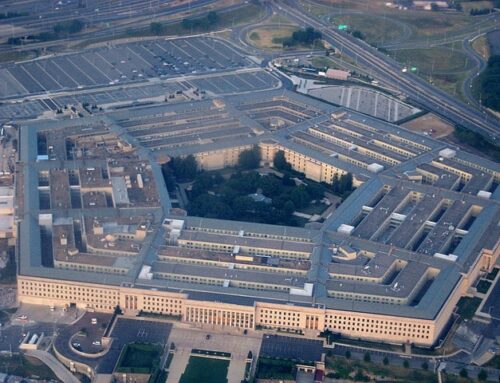Spending on programs related to the Pentagon is on a steep upward glide path – to put it in aviation terms. Defense contractors are flying high. The adage that whatever goes up must come down doesn’t seem to apply here.
At Taxpayers for Common Sense we’re all for spending what is necessary to keep Americans safe. But we resist the notion that, somehow, Pentagon spending is a special category that is beyond scrutiny. Making any category of spending immune from oversight is an invitation to waste.
We admit to being a little shell-shocked by the size of the fiscal year (FY) 2020 President’s Budget Request. Defense programs, which is more than just the money spent at the Pentagon, clocked in at $750 billion with roughly $165 billion of that being the magically off-budget Overseas Contingency Operations (OCO) accounts. The administration claimed this gimmick was necessary to “comply” with the Budget Control Act (BCA) caps. In reality this OCO dodge was done to evade the caps. And the Pentagon admitted as much in its explanatory documents where they helpfully pointed out that only about $25 billion of that total is actually for contingencies taking place overseas.
Enter the House Appropriations Committee. Their first spending bill for FY20 relating to the Pentagon was the one that funds military construction programs along with Veterans Affairs. There was both good news and bad news for fiscal conservatives in that bill, but oversight is ramping up and that’s a good thing.
Now this week the draft spending bill covering the bulk of Pentagon programs was made public. Again, there are things we like (the beginning of OCO controls and killing the ridiculous National Guard and Reserve Equipment Fund) and things we don’t (more F-35s!) but this week we’re going to “accentuate the positive.” (If you haven’t heard that WWII classic from Bing Crosby and the Andrews Sisters, give it a listen. It’ll cheer you up. Promise.)
We welcome the committee’s rejection of much of what the Trump administration is trying to do with the OCO accounts:
- The request for OCO spending was sliced to $68 billion – more than $96 billion less than the request. It is true that the bulk of these funds were moved back into the so-called “base budget” so this doesn’t reduce the Pentagon topline by much – just $8 billion. But hey, that’s $2 billion more than the entire EPA request.
- The bill requires separate budget justification documents from the administration regarding the costs of U.S. military participation in contingency operations. This is something we’ve been advocating for at TCS and will give budget nerds like us greater visibility into those accounts.
- It rejects the Trump Administration’s attempts to fund wide swaths of procurement programs entirely in the OCO accounts.
- It also rejects the administration’s attempts to cover huge portions of routine maintenance accounts with OCO funds.
As we said before, jamming a whole pile of cash into OCO was a dodge to avoid coming up with a real solution to the caps set by the BCA. The administration was intending on using OCO for clearly regular spending items subject to the caps. For instance, all ammunition procurement for the military services, all missile procurement for the Army and Navy. There’s plenty of ammunition used for training in the United States. And let’s say you’re commanding troops stationed in South Korea. Is all the ammunition for your units considered a contingency purchase? Obviously not. We’ve been preparing for the possibility of war on the Korean Peninsula for more than 60 years. That’s not a “surprise – who saw this coming?” contingency that the Pentagon hasn’t planned for.
Another stunning aspect of the Pentagon’s request was just under $1.5 billion to modify submarine launched ballistic missiles using OCO funds. In what budgetary universe is updating Trident missiles something that would happen only in support of some unexpected contingency? There was also huge swaths of operations and maintenance funds to regular items like, say, nearly 80 percent of ship depot maintenance stuffed into OCO.
The Budget Control Act of 2011 is still the law of the land for the top line on defense and non-defense spending. And before the Bipartisan Budget Act of 2018 added more than $300 billion to the debt, increases to the BCA caps were largely offset. Instead of sweeping overspending under the OCO rug, the administration should have come to the table with offsets. Also, it’s worth remembering that while the BCA cap $576 billion in FY20 defense spending may seem dramatically less than $647 billion from last year, it’s still, $25 billion more than FY2017 base defense spending.
So do we think the Pentagon topline could have been reduced by more than $8 billion and we’d still be safe? Yes. But our glass half-full outlook is that at least there are some stirrings of budget oversight by the House Appropriations Committee.











Get Social